Companion Plants for Carrots: 11 Great Choices (With Pictures)
-
Pete Ortiz
- Last updated:

You’ve got to admit: carrots are basically a super vegetable. They contain a lot of vitamin A and beta-carotene, indirectly reducing the chances of getting high blood levels and diabetes. The calcium in carrots also aids in strengthening bones which makes them a vital vegetable to have in your diet.
Luckily it’s pretty easy to grow carrots in your garden. Unlike most plants, they don’t have many requirements for growth and take only around 50–75 days to mature. However, the soil has to be light and well-hydrated since the carrot grows as the plant’s root. One of the best ways to tell if the land can support carrots is by experimenting with plants with the same or similar growing conditions.
The 11 Best Plants To Grow Alongside Your Carrots
Companion growing is a standard method farmers use to ensure that the garden’s symbiotic system is well-balanced. There are several companion plants that benefit carrots and improve their growth conditions. They also repel pests and attract pollinators. Some of these plants include:
1. Onions
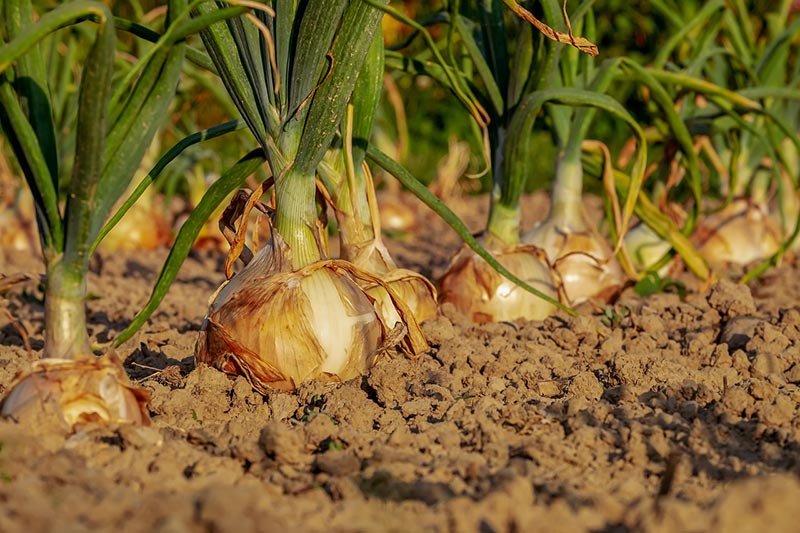
| Maturity time: | 90 days or more |
| Benefits: | Repel pests |
| Proximity: | Opposite rows |
The pungent smell of onions deters many pests that attack carrots, such as carrot rust flies. Onions also have bulbous roots and do not interfere with carrot growth. Yes, they take longer to mature compared to carrots, but the difference is only around 1 month.
2. Scallions
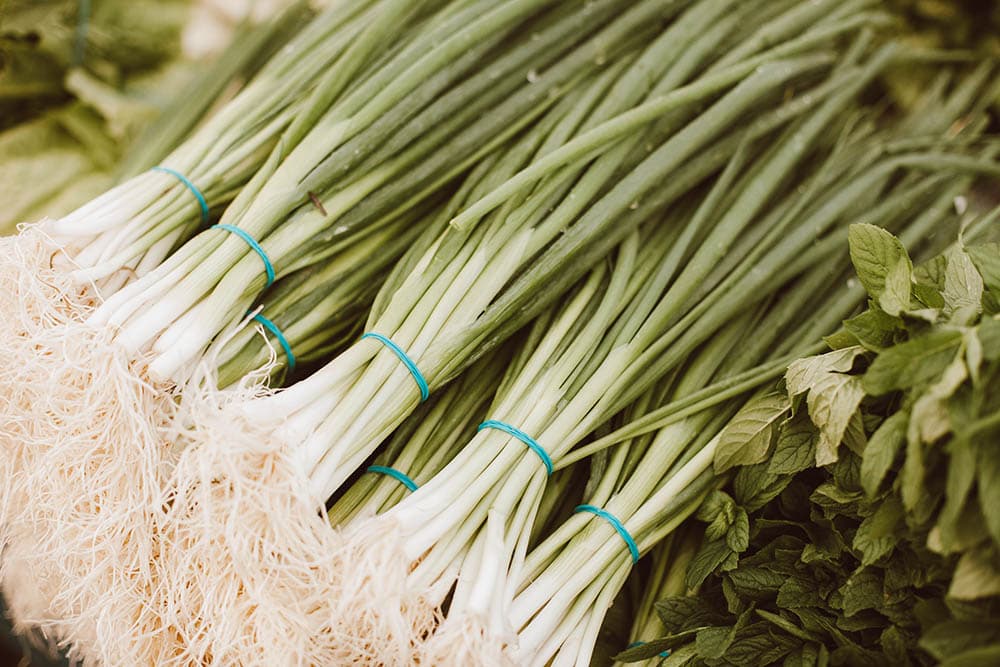
| Maturity time: | 60 days |
| Benefits: | Repel pests |
| Proximity: | Opposite adjacent rows |
Scallions are leafy vegetables and look like onions when observed above ground. Like onions, they are a common companion plant for carrots because of their pest-repellent properties. They also grow pretty quickly, and you can grow at least two rounds of scallions before it’s time to harvest the carrots. Scallions also are non-competitive foliage crops and don’t drain nutrients from the soil, leaving the carrots with sufficient nutrients to grow.
Please note that if you are going to plant scallions with carrots, you need to plant them in the opposite, adjacent rows; leave at least 6 inches between the rows. You can also encircle the carrots with scallions like a force field!
3. Leeks

| Maturity time: | 150 days |
| Benefits: | Repel pests |
| Proximity: | In opposite rows |
Leeks are among the longest-season crops and take at least 150 days to grow till maturity. For the best results, you should plant carrots and leeks at the same time. After harvesting the first round, you can also plant another round of carrots in the leek bed. Either way, ensure you leave at least 8 inches between the leeks and the carrots.
Leek is a great companion crop for many plants. It masks their smell and makes it harder for pests to identify them. Their pungent smell is especially effective in repelling carrot flies and aphids.
4. Radish
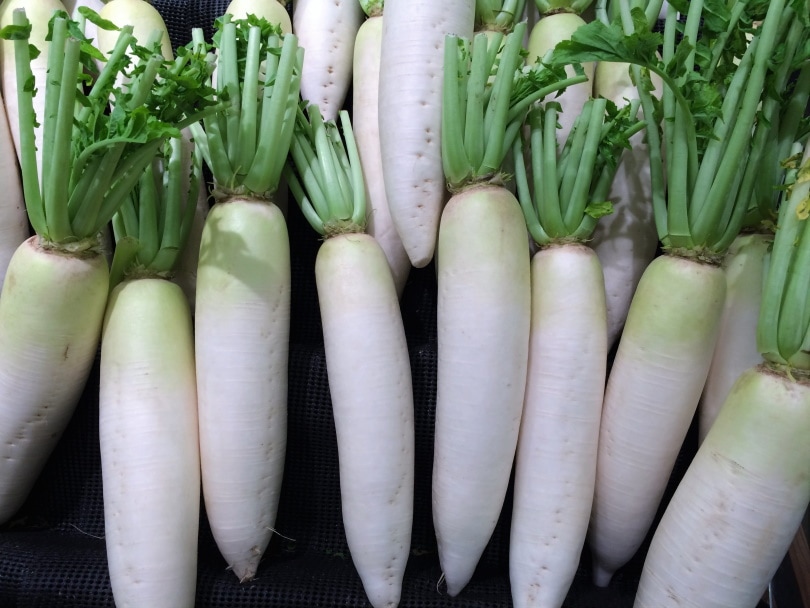
| Maturity time: | Around 30 days |
| Benefits: | Maximizes yield |
| Proximity: | 4–6 inches |
You can plant radish seeds in rows next to carrots. The best part about planting them as companion crops for carrots is that you can grow two or three successions of radishes in the period it takes for the first succession of carrots to mature. However, ensure you don’t disturb the carrots when harvesting the radishes.
Radishes are among the easiest vegetables you can grow, and their complementary root structure stays in the shallow top inches of the ground. They also don’t shade carrots from sunlight since they are approximately the same size.
5. Beets
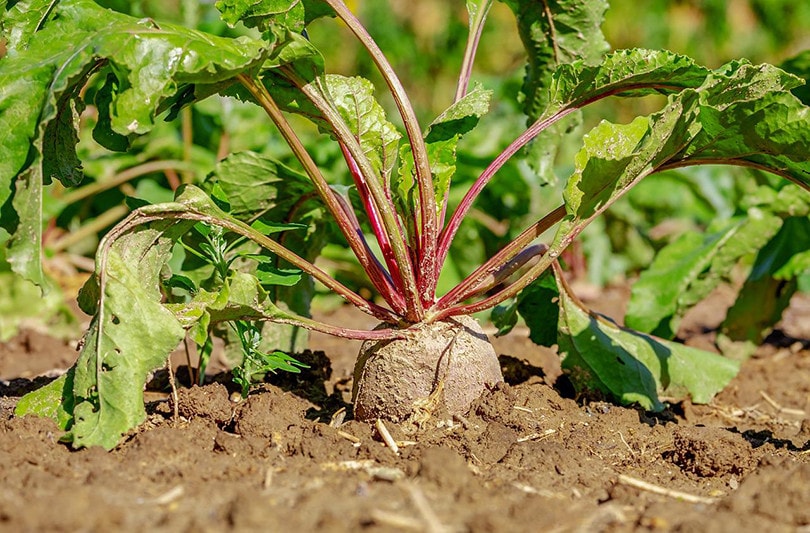
| Maturity time: | 50–70 days |
| Benefits: | Loosens the soil and maximizes yields |
| Proximity: | 8–10 inches |
You should plant beets in the cool weather season when planting carrots. They loosen up the soil in the garden with their large taproots and bulbous roots. Carrots and beets also go well together in salads and stews, so planting them together is a win-win situation.
6. Spinach

| Maturity time: | 6 weeks |
| Benefits: | For biodiversity and to maximize yields |
| Proximity: | 4–6 inches |
Spinach grows better during the warmer seasons, and the seeds need the ground to be at a temperature of 45o F. They do pretty well when grown with carrots, so plant them a few weeks after planting the carrots. Spinach roots are shallow and stay low on the ground, so they do not interfere with carrot roots.
7. Turnips
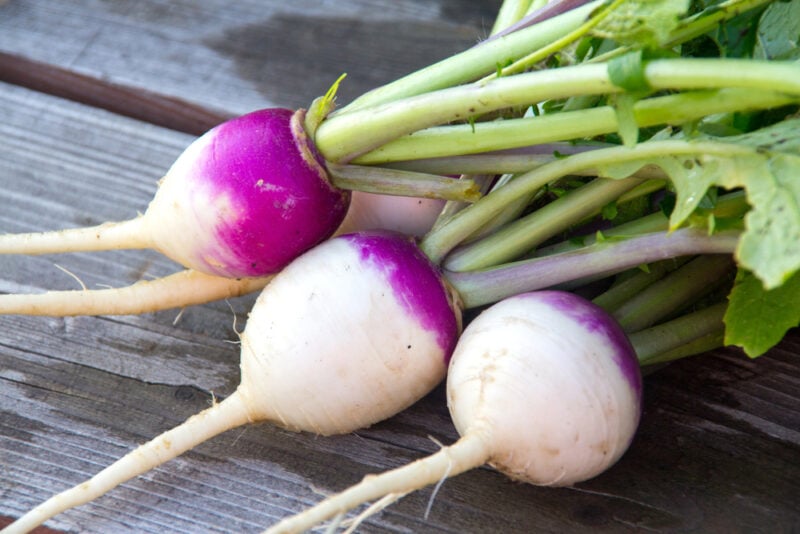
| Maturity time: | 6–10 weeks |
| Benefits: | Loosen the soil and maximize yields |
| Proximity: | At least 4–6 inches |
Turnips are in the same class as veggies like beets and radishes and grow in similar conditions. They grow in the same cool season and in soils with a lot of moisture. The tap root and bulb do not interfere with the root of the carrots, and they don’t use too many nutrients in the soil.
Their green leaves also have a strong spicy smell that repels the garden’s pests, especially carrot flies. However, some turnip bulbs grow to a large size which can impair the growth of carrots.
8. Cabbages
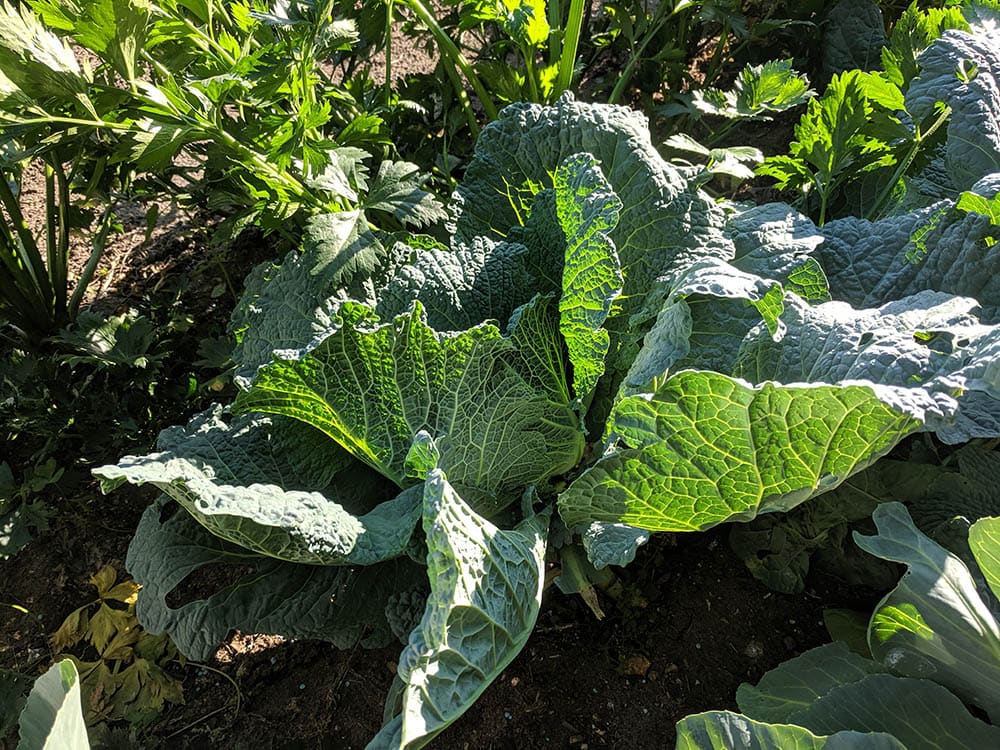
| Maturity time: | 60–100 days |
| Benefits: | Loosens the soil and maximizes yields |
| Proximity: | At least 12 inches |
Cabbages make a great companion crop for carrots since they are low-growing. Although they don’t repel pests, they add diversity to the soil and distract the pests from the carrots. Plus, you have to admit; a combination of cabbages and carrots also makes excellent soup.
9. Bush Beans

| Maturity time: | 50–70 days |
| Benefits: | Adds nutrients and maximizes yields |
| Proximity: | 6 inches |
Bush beans don’t grow tall and are at no risk of shading carrots from sunlight. Beans also release organic nutrients into the soil through the nitrogen-fixing bacteria in their roots. Although carrots don’t do well in soils with high nitrogen levels, planting a few bush beans won’t do any harm. They also don’t pose any competition for nutrients to the carrots.
10. Lettuce
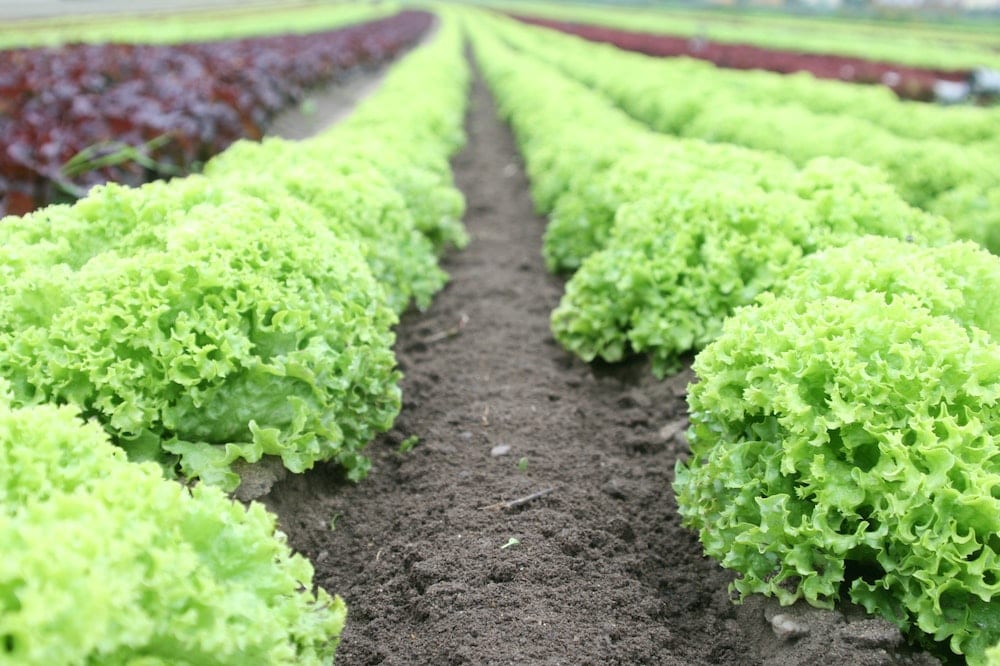
| Maturity time: | 6–8 weeks |
| Benefits: | Maximizes yields and space |
| Proximity: | At least 3–6 inches |
Unlike most other companion crops, you can plant lettuce in between carrots. The lettuce will often be ready for harvest first, so ensure you don’t disturb the soil during harvesting. While lettuce may not have significant benefits as a companion crop, they make good use of any unused space in the carrot bed. Lettuce is also shallow-rooted and won’t compete with carrots.
11. Tomatoes
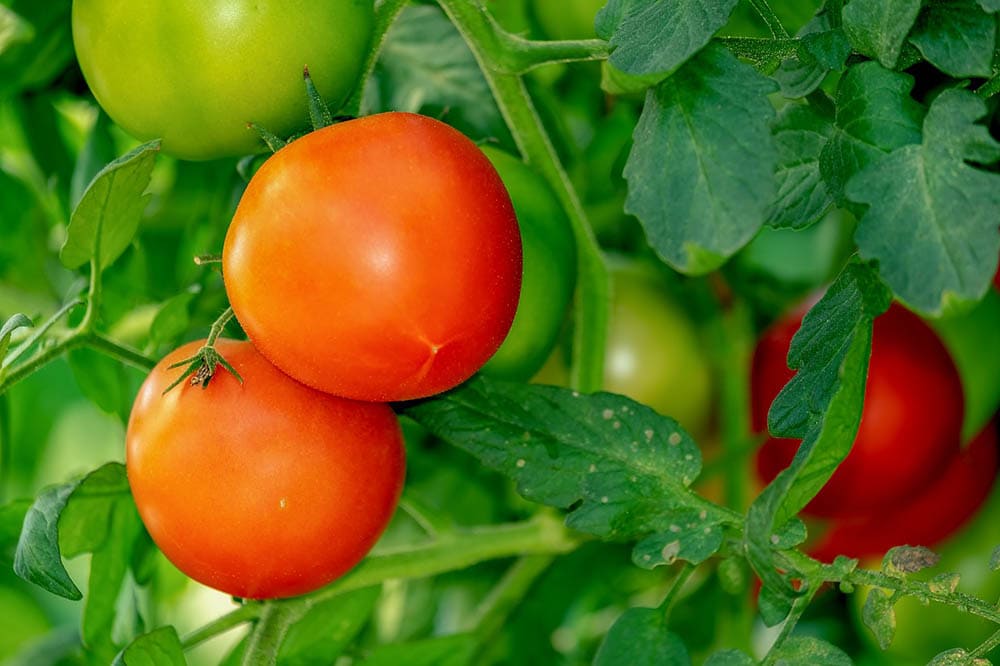
| Maturity time: | 60–100 days |
| Benefits: | Maximizes yields, repels pests |
| Proximity: | At least 10–12 inches |
Carrots and tomatoes are a match made in heaven both in the garden and kitchen. However, if you choose to grow tomatoes with your carrots, you need to add sprinklers because tomatoes rob carrots of water. They also produce strong natural insecticides, referred to as solanine, that repels pests.
The 5 Worst Companion Plants for Carrots
Carrots are easygoing plants and will survive in most conditions and with most companion plants. However, there are some plants they don’t get along with. They include:
1. Dill
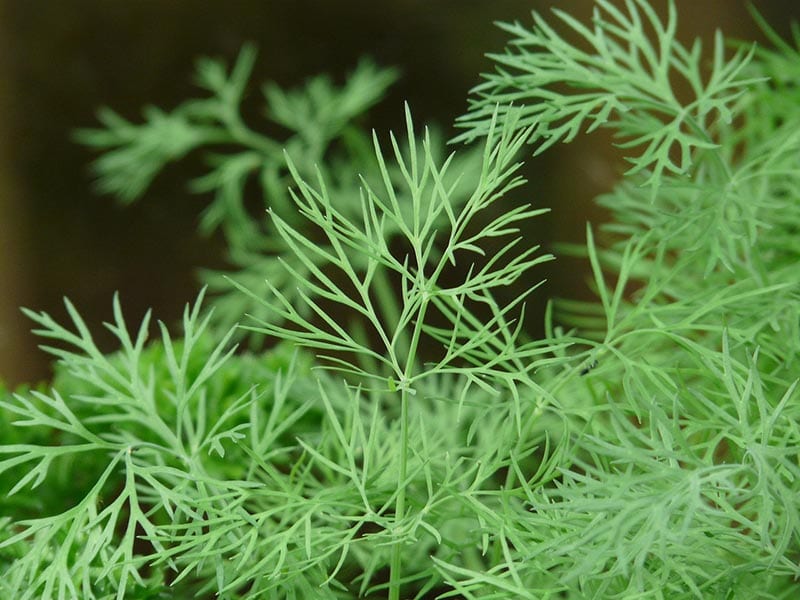
Dill produces compounds that can stunt carrot growth. They are among the worst companion plants for carrots for this reason alone.
2. Fennel
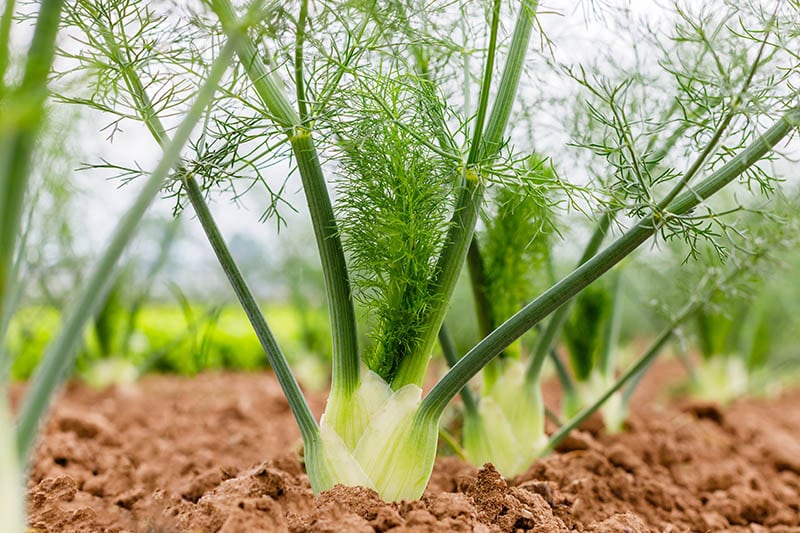
Fennel releases harmful chemicals in the soil, making it a poor companion for carrots. You should avoid planting them the season before you plant carrots since these chemicals are still retained in the soil for an extended period.
3. Parsnips
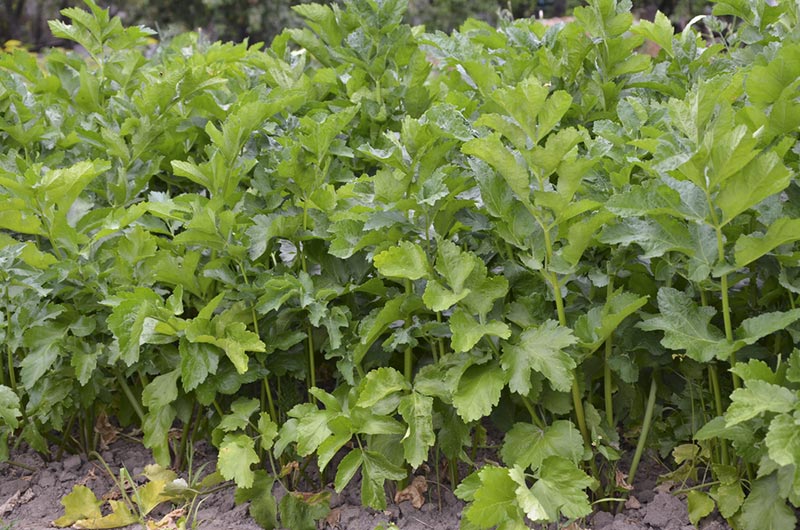
Parsnips are from the same family as carrots and attract the same pests. Planting them on the same bed attracts double the number of pests and reduces the quality of the yield. They also take up carrots’ nutrients and the underground space.
4. Potatoes
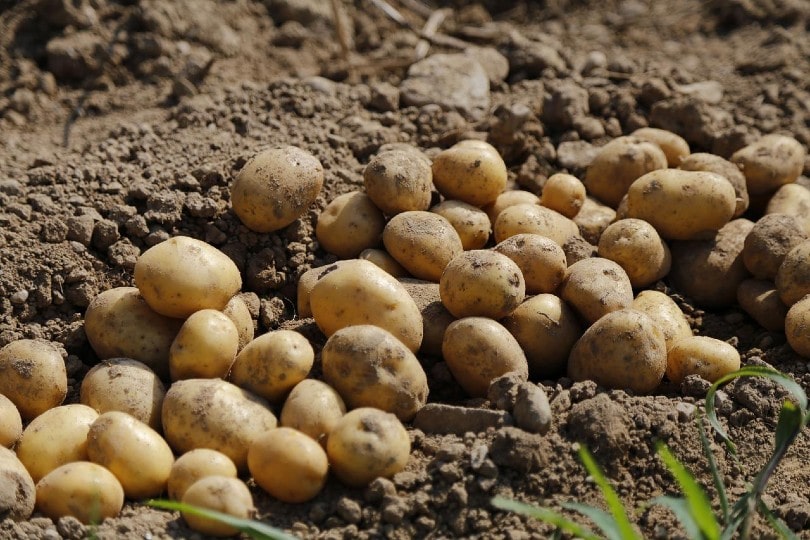
Potatoes are tubers, and the roots can be deep and spread over a vast network. They end up competing for space and nutrients and may stunt the growth of carrots. Planting them in the same bed results in small and wilty looking carrots.
5. Apiaceae
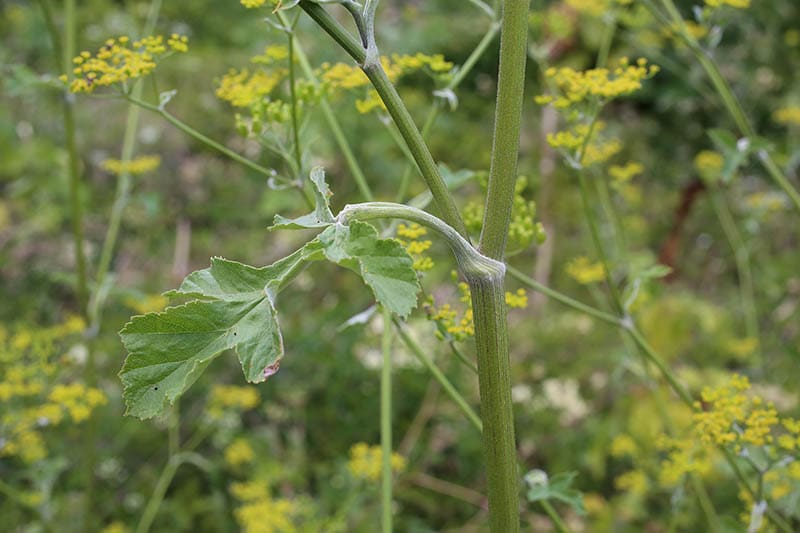
Apiaceae and carrots belong in the same family. They compete for nutrients and water while attracting the same pests. These plants can also cross-pollinate, which can interfere with your seed bank.
Benefits of Carrots
Carrots are one of the most consumed root vegetables. Although they are often orange in color, they also come in other hues, such as purple, yellow, red, and white. They can be eaten raw, added to salads and stews, or used to make soup. Some of the health benefits of carrots include:
They Improve Vision
This is probably the most known superpower of carrots. They contain high amounts of beta-carotene, which the body changes into Vitamin A, which then keeps the eyes healthy. It also protects the eyes from sun damage and reduces cataracts.
Yellow carrots, in particular, have a lot of gluten which is excellent for your eyes. Luten can also prevent age-related muscle degeneration in the eyes.
They Lower Your Risk of Cancer
Cancer is one of the leading causes of death. Eating carrots has been proven to fight harmful tumors, which reduces your risk of developing cancer. The antioxidants responsible for this include carotenoids and anthocyanin, which are also responsible for giving carrots their color.
They Boost Your Immune System
Carrots have a lot of Vitamin C, which boosts the immune system, and helps the body in building antibodies to fight off diseases and infections. Vitamin C also makes it easier for the body to take in and synthesize iron, which helps prevent infections.
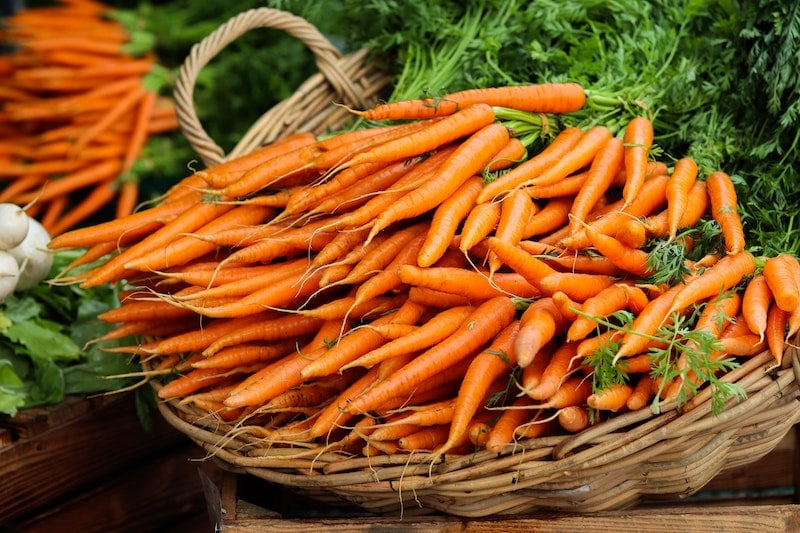
They Strengthen Bones
Carrots have calcium and Vitamin K, which are vital in the formation of bones. They also strengthen bones and help broken bones mend faster.
They Help With Constipation
If you are having trouble with indigestion and constipation, try taking raw carrots or carrot juice. Carrots have a high fiber content which helps with digestion and passing stool. They also help in cleansing the gut.
The Help Control Diabetes
Diabetes patients are advised to load up on vegetables often, especially carrots. The fiber and antioxidants in carrots help in controlling blood sugar levels. Vitamin A and beta-carotene also lower the risk of developing type 1 and type 2 diabetes.
Conclusion
Although carrots have many significant health benefits, you should be wary of consuming too many of them. Overconsumption can turn your skin into an orange-yellow shade. It’s harmless in most cases and can be treated easily. However, taking too many carrots can also stop Vitamin A in your body from being effective, which can affect your vision, skin, and bones.
To properly prepare carrots, wash them thoroughly in water and scrub all the dirt off. You can also peel them before eating or cooking with a knife or a vegetable peeler. After peeling, you can eat them raw with humus or add them to beef stew, chicken, or stir fry. They go well with almost all meals.
You Might Also Be Interested In:
Featured Image Credit: katerinavulcova, Pixabay
Contents



